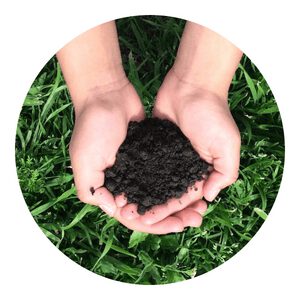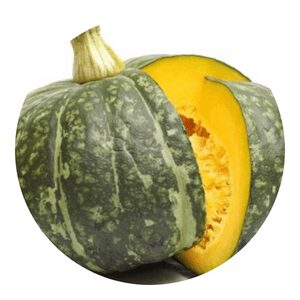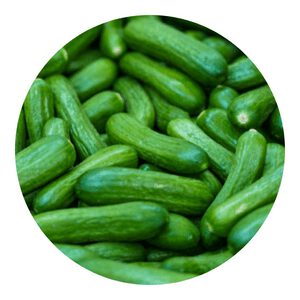How to Grow Pumpkins in Texas
Growing pumpkins in Texas may seem like an intimidating task, but with the right knowledge and materials, it can be a rewarding experience.
Pumpkins are a popular crop to grow in Texas due to their versatility as both ornamental and edible plants.
Pumpkins can easily be added to any garden or landscape, lending a unique charm and providing fresh produce for your table.
Texas Pumpkin Menu
Growing Pumpkins in Texas
Growing pumpkins in Texas can be a fun experience for gardeners of all levels.
With the right climate and soil, any gardener can have success growing this beloved vegetable.
Texas has ideal conditions for pumpkin production, as it provides ample sun exposure and plenty of warm days to ensure strong growth.
The variety chosen is key when it comes to producing a successful crop. There are many different types of pumpkins that thrive in the Lone Star State’s climate, from the classic Jack-O-Lantern to white or blue varieties.
Knowing how to prepare the soil, plant and harvest are all essential steps for having a bountiful harvest come Fall.
This article will provide helpful tips on how to grow pumpkins in Texas so you can enjoy a beautiful pumpkin patch every year!
Key Considerations
Growing pumpkins in Texas can be a rewarding experience, but there are several key considerations to keep in mind.
First, the soil needs to be well-draining and nutrient-rich. If your soil is heavy or clay-like, it might need to be amended with organic material such as compost or manure.
Additionally, the pH of the soil should match the need of pumpkins – between 6 and 8 for optimal growth.
It’s also important to select pumpkin varieties adapted for your particular region in Texas.
Varieties such as “Casperita” and “Orinoco” are good choices for warmer climates, while “Baby Boo” and “Jack Be Little” are great options for cooler areas.
One October night, a Texan's delight A full moon shining with a pumpkin in sight Round orange orbs from the Texas soil Adorned the fields of russet and toil The vine grew, tall and strong The blossoms opening, pumpkins began to form A glorious festival had just begun In the Lone Star State the pumpkins have come!
Chappy The Gardener
Soil Requirements
Pumpkins are a delicious and nutritious addition to the Texas garden.
Growing pumpkins in the Lone Star State can provide a harvest full of flavor, but it’s important to understand the soil requirements for successful pumpkin production.
Pumpkins grow best in soils that are not overly acidic or alkaline, with a pH between 6.0 and 7.5. For sandy soils, amending with organic matter such as compost will improve drainage and water retention capabilities.
Clay-based soils should be amended with sand for improved aeration.
Adequate moisture is essential for healthy pumpkin growth; watering deeply two to three times per week is recommended in dry conditions.
Additionally, adding mulch can help retain moisture levels and prevent weed growth, which competes for valuable nutrients that your pumpkins need to thrive!
Planting Timeframe
Gardeners living in the great state of Texas have access to some of the best growing conditions in the country.
With its mild winters and hot summers, it is ideal for growing a variety of vegetables, fruits, and flowers.
When considering what planting timeframe works best for growing pumpkins in Texas, remember that this state experiences both warm and cool weather throughout the year.
It’s best to wait until late spring or early summer when soil temperatures are consistently above 70 degrees Fahrenheit before planting seeds outdoors.
Pumpkins require about three months of warm weather before harvesting so plan accordingly!
Planting too soon can lead to small fruit and poor yields due to short days, cold nights, and inadequate pollination from bees.
Water Needs
As Texans, we know that nothing grows without water.
Pumpkins are no exception! It’s important to understand how much water your pumpkins need in order to get the most out of your crop.
Here are some tips for making sure your pumpkins get all the hydration they need to thrive in Texas soil.
When it comes to watering pumpkins, consistency is key.
Plants prefer an even supply of moisture throughout their growth cycle, so this means regular watering during the growing season. Make sure you’re providing at least 1-2 inches of rain or irrigation every week and avoid overwatering or underwatering.
Keep an eye on rainfall amounts as well and adjust accordingly if there’s a lack of rain in the area.
Additionally, provide extra water near blossom time to promote fruit set and reduce stress on plants during hot weather conditions.
The Best Organic Fertilizer for Pumpkin
Growing pumpkins in Texas can be a fun, rewarding experience.
However, you need to make sure you give your plants the best care possible for them to thrive. This includes using the right kind of fertilizer.
Organic fertilizer is one of the best options for pumpkin growing as it encourages strong root systems and healthy plant growth while also being safe for the environment.
The best organic fertilizer to use when growing pumpkins in Texas is compost or aged manure.
These types of products are full of nutrients that pumpkins need in order to grow big and strong.
Compost and aged manure also improve soil structure which helps retain moisture and minimizes weed growth.
Additionally, these fertilizers release their nutrients slowly so they last longer and are more efficient than synthetic fertilizers which need to be applied more frequently.
Click To Fertilizer
Pumpkin Organic Seeds
Pumpkin organic seeds can be a great way to grow pumpkins in Texas.
Through certified organic seed, you can ensure that your pumpkins are free from pesticides and chemicals.
Organic pumpkin seeds also come with the assurance of knowing that the seed was grown in an environment that had no chemical fertilizers or herbicides used.
As a result, this makes for healthier pumpkins for you and your family.
Organic pumpkin seeds need to be planted during the months of April through June in Texas so they have time to ripen before fall harvest season.
The soil should remain consistently moist but not wet throughout their growth cycle as too much water will cause them to rot away before they reach maturity.
In conclusion,growing pumpkins in Texas can be a rewarding and fulfilling experience.
With proper soil preparation, fertilizing, weeding and insect/disease control, you can produce a successful harvest of pumpkins.
It is important to select the right variety for your area, rotate crops and practice proper crop management techniques.
Growing pumpkins in Texas quickly becomes an enjoyable family activity that can give you a great sense of accomplishment and pride.
To ensure a bountiful harvest next season, plan your pumpkin planting now!
Click To Grow
Helps Us Grow – Share If You Like

















